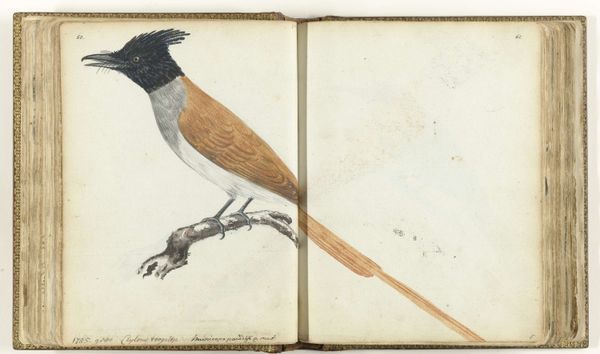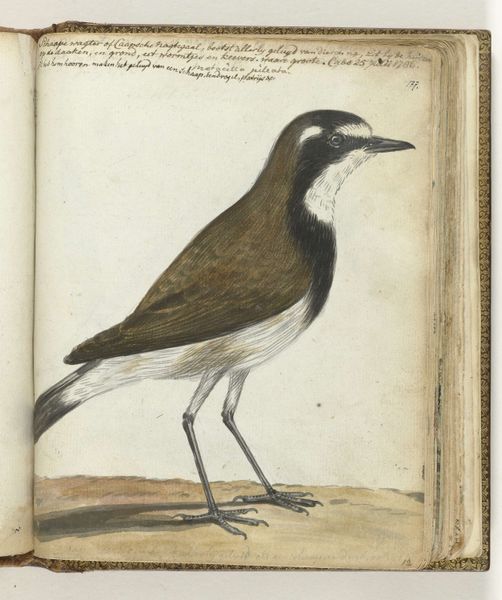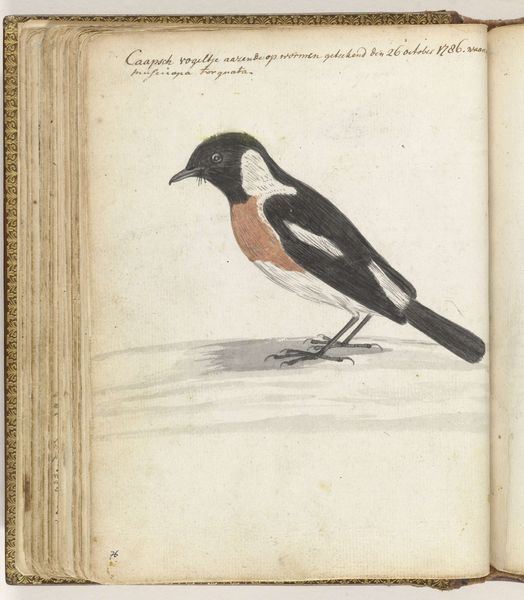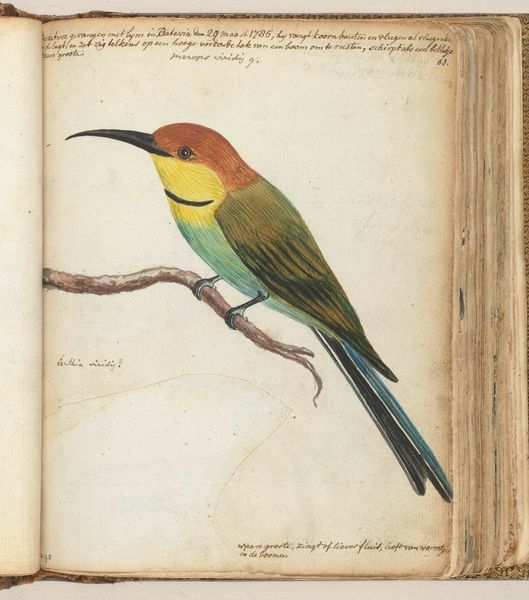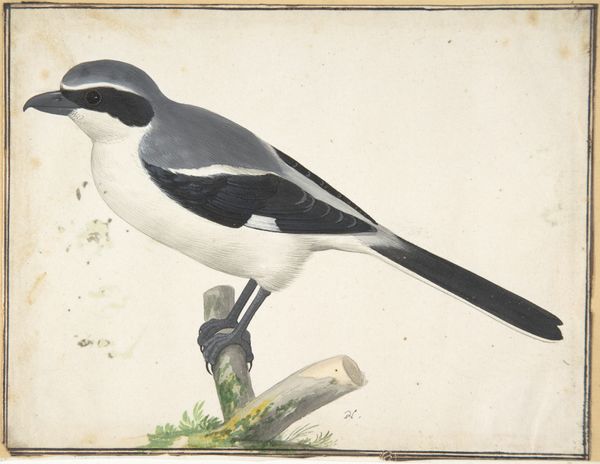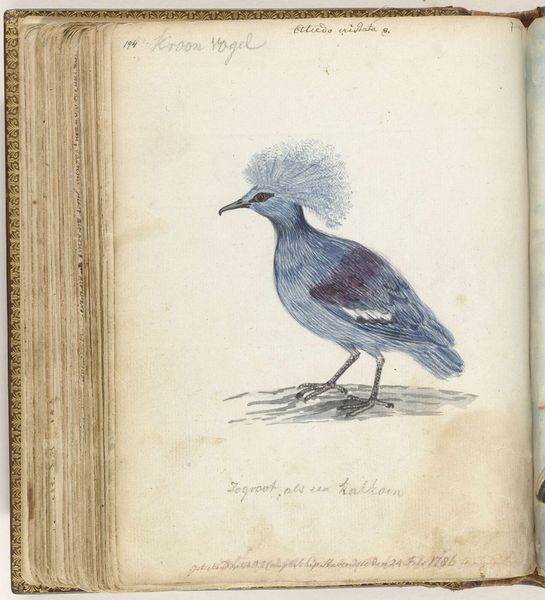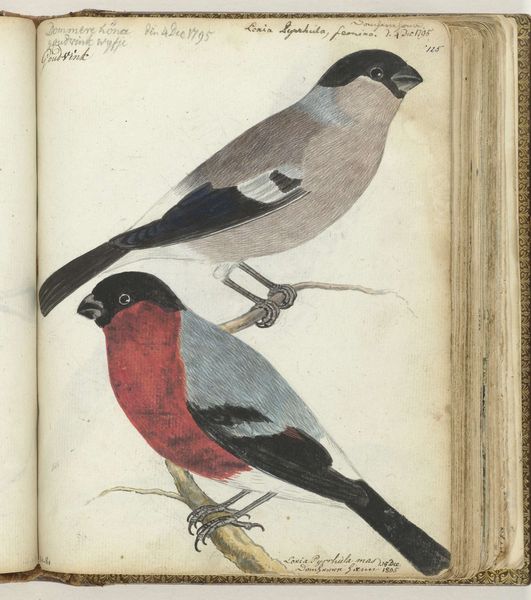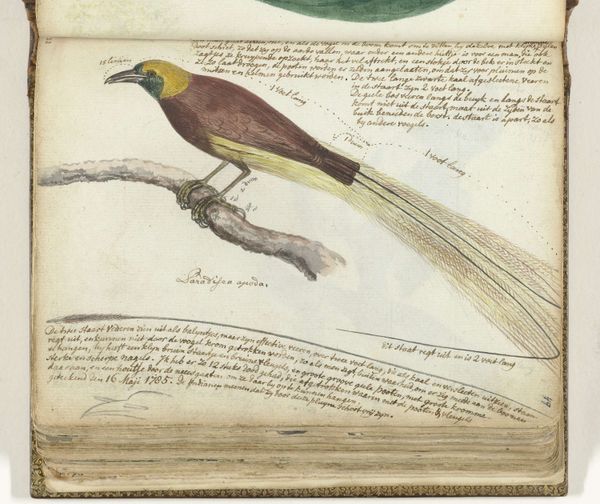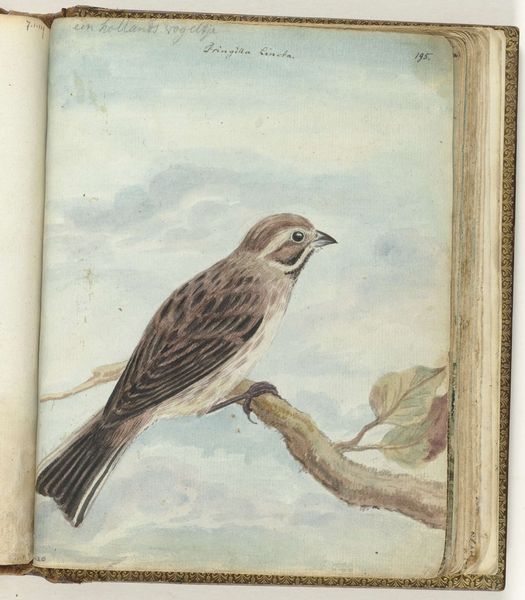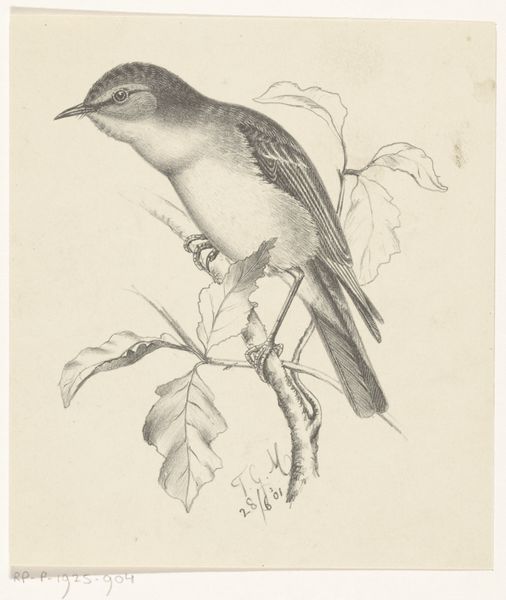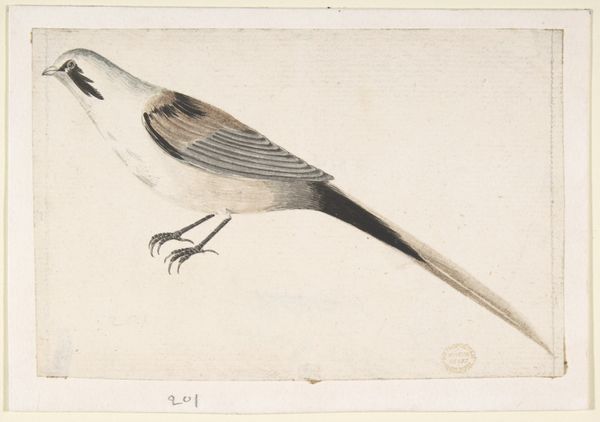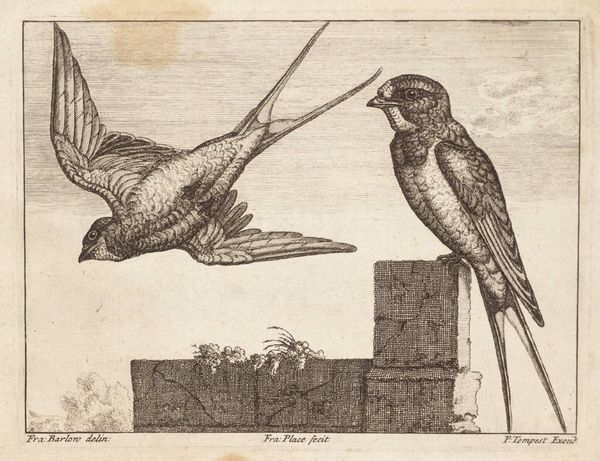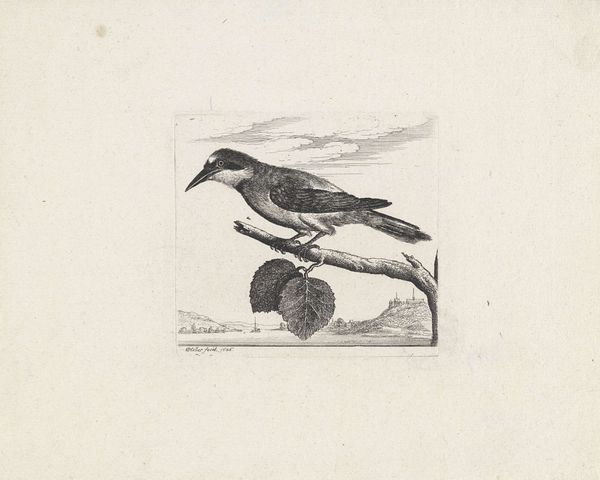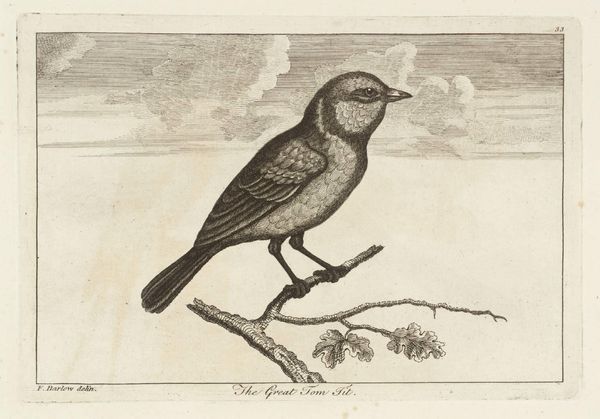
drawing, pencil
#
portrait
#
drawing
#
neoclassicism
#
pencil sketch
#
bird
#
figuration
#
coloured pencil
#
pencil
#
watercolour illustration
#
watercolor
#
realism
Dimensions: height 195 mm, width 310 mm
Copyright: Rijks Museum: Open Domain
Editor: This is Jan Brandes’s "Paradise Flycatcher," likely from 1785, a pencil and watercolor drawing within what seems to be a sketchbook. The precision is really striking. How would you approach interpreting this image? Curator: Formally, it's fascinating how Brandes uses line to delineate the textures and forms. Notice the stark contrast between the delicate, almost feathery strokes defining the bird’s body and the more rigid, parallel lines used to render the tail. This use of contrasting textures enlivens the entire composition. What effect does the contrast produce? Editor: I think it gives a sense of depth. The body looks softer, more rounded than the tail, which feels flat and linear, as though light and air differ. Curator: Precisely. The tonality also establishes figure-ground relationships. The bird, rendered in meticulous detail, is visually separated from the blank background by contrasts of line, tone and value. Do you see how Brandes skillfully creates the illusion of three-dimensionality within the confines of a two-dimensional plane, simply through line and value? Editor: Yes, that’s something I hadn’t fully considered. It’s like the artist is using different ‘languages’ of drawing to give us a more comprehensive understanding of the bird. It strikes me that it is very scientific and analytic, rather than emotional. Curator: Exactly. The piece emphasizes careful observation, precision, and a clear, rational depiction of form. These values, when effectively implemented, have a great effect on how we percieve the work. It encourages us to analyze, rather than simply feel. Editor: Seeing how Brandes manipulated those elements makes me look at drawings in a new way. I see that careful choices in lines and tones, not only provide texture but make a piece alive. Curator: Agreed, focusing on form allows us to see how artists, even when depicting something as seemingly straightforward as a bird, can communicate complex visual information.
Comments
No comments
Be the first to comment and join the conversation on the ultimate creative platform.
